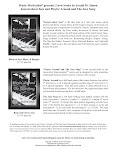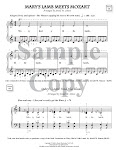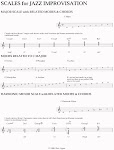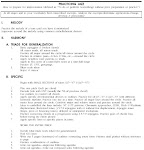 The next pentascale I will describe is the minor pentascale. This pentascale is created using the first five notes from the major scale (as with the major pentascale), but the third note (in the key of C it would be E) is flatted as if you were playing the minor chord. If you play the five notes of the C minor pentascale you will play C D Eb (E flat) F G. A good way to practice this pentascale is to play the minor chord (C Eb G) then play the minor pentascale going up and down and play the minor chord again. This can be done in every key. Here is what the C minor pentascale looks like in music:
The next pentascale I will describe is the minor pentascale. This pentascale is created using the first five notes from the major scale (as with the major pentascale), but the third note (in the key of C it would be E) is flatted as if you were playing the minor chord. If you play the five notes of the C minor pentascale you will play C D Eb (E flat) F G. A good way to practice this pentascale is to play the minor chord (C Eb G) then play the minor pentascale going up and down and play the minor chord again. This can be done in every key. Here is what the C minor pentascale looks like in music:
The next pentascale I will describe is the diminished pentascale. This pentascale is created using the notes from the diminished chord. If you play the five notes of the C diminished pentascale, you will play C D Eb (E flat) F Gb (G flat). A good way to practice this pentascale is to play the diminished chord (C Eb Gb), then play the diminished pentascale going up and down and play the diminished chord again. This can be done in every key. Here is what the C diminished pentascale looks like in music:

The next pentascale I will describe is not necessarily a true pentascale, but I enjoy teaching it to music students (and they love playing around with it). This is the pentascale comprised of the first 5 notes from the blues scale. The C blues scale is C Eb F F# G Bb C. If you play the first five notes of the blues scale you will play C Eb (E flat) F F# G. A good way to practice this pentascale is to play the C minor chord (C Eb G) but play it using the fingering 1 2 5 (1 = C, 2 = Eb, 5 = G) then simply add the F (with the 3rd finger) and the F# (with the 4th finger). This can be done in every key. Here is what the pentascale comprised of the first 5 notes from the blues scale looks like in music:







.jpg)







+latest+and+greatest+flattened+(smaller+size)+rgb+mode.jpg)
.jpg)






































.jpg)
No comments:
Post a Comment